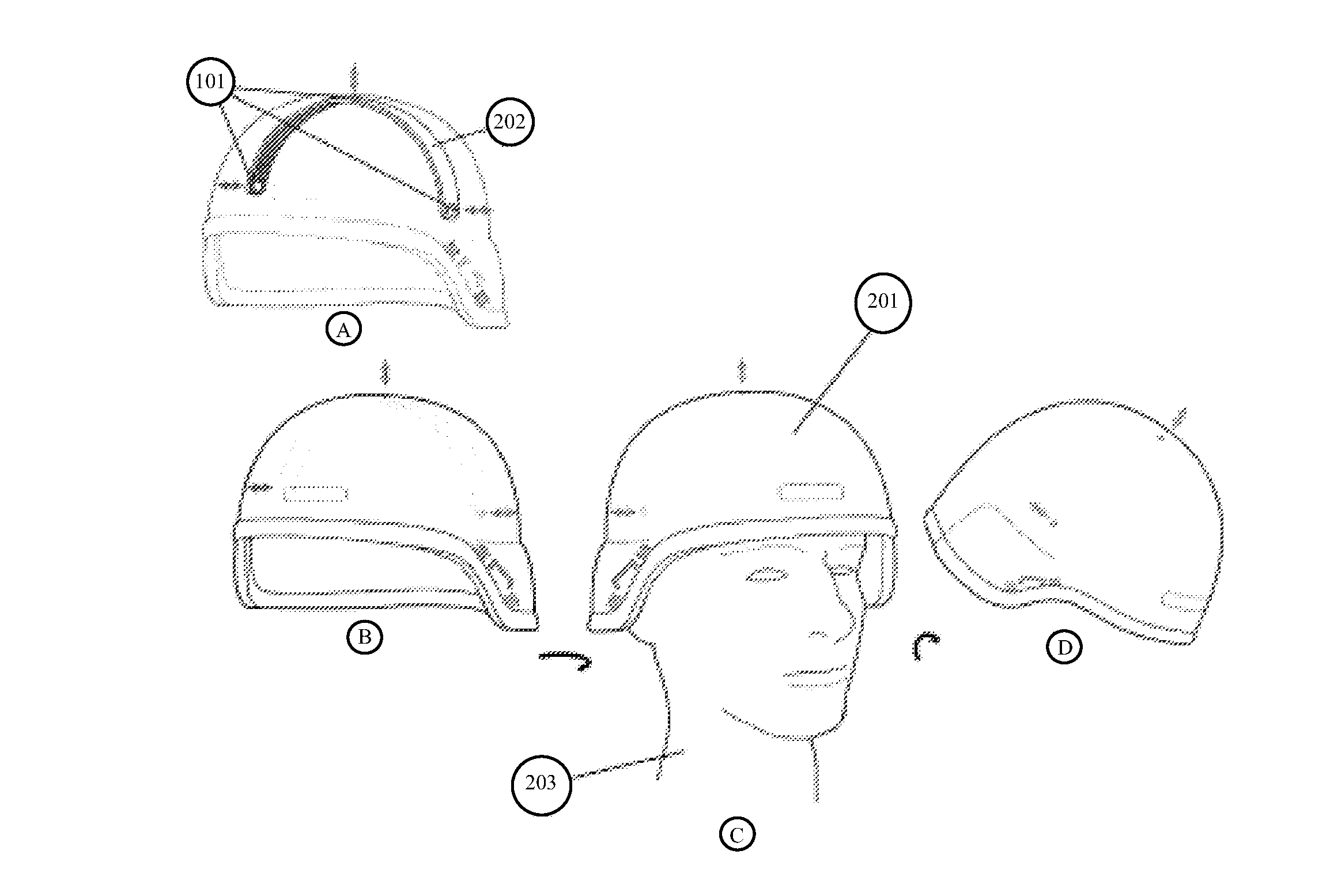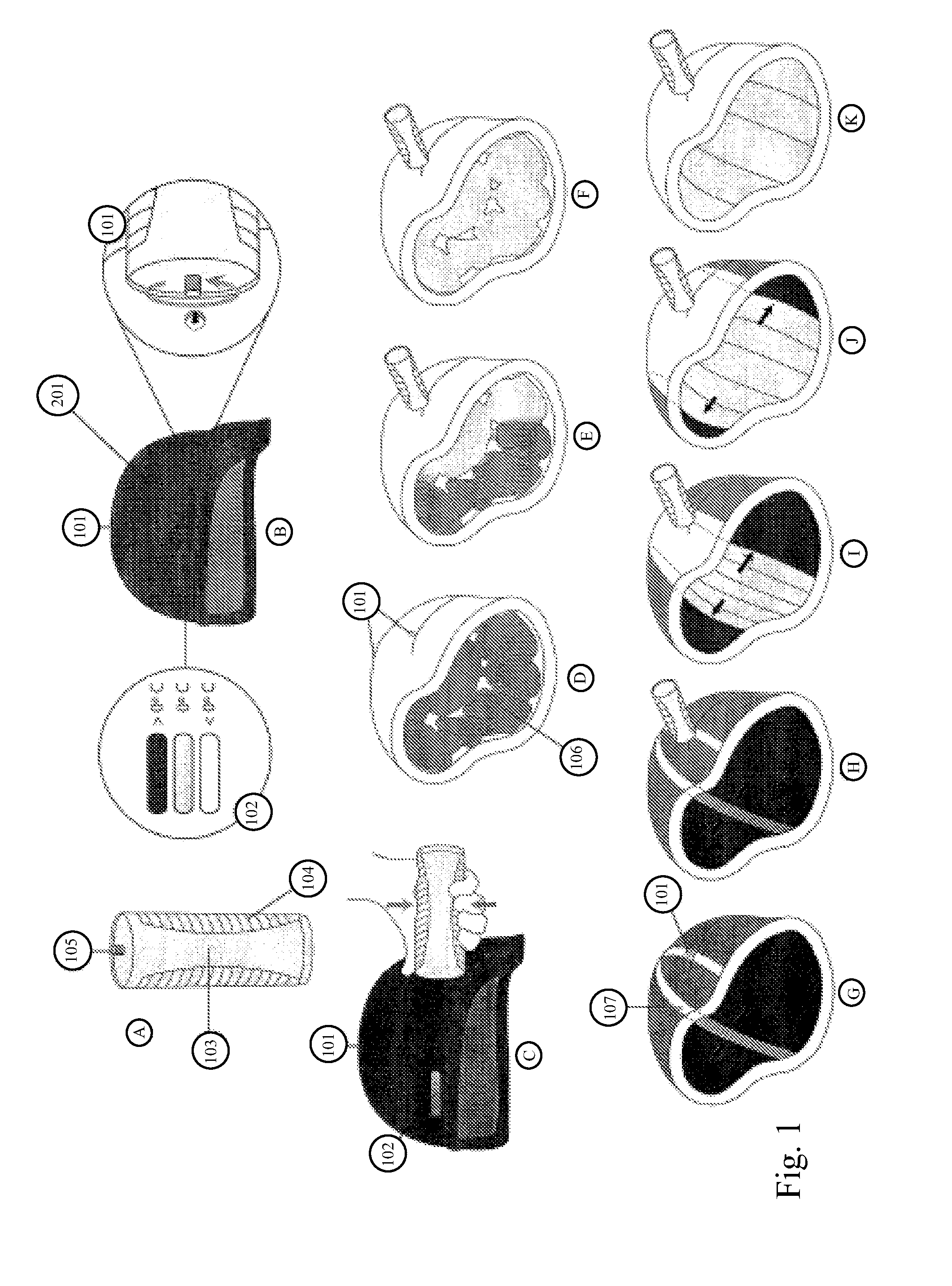Therapeutic Brain Cooling System and Spinal Cord Cooling System
- Summary
- Abstract
- Description
- Claims
- Application Information
AI Technical Summary
Benefits of technology
Problems solved by technology
Method used
Image
Examples
Embodiment Construction
[0032]The present invention relates to a brain cooling system comprising a helmet. In one embodiment, the helmet can be for use in military helmets or in non-military helmets. The brain cooling system comprises an inflatable pad, or a set of inflatable interconnected pads, attached to the interior surface of the helmet body, together with a series of valves that allow coolants, including, but not limited to, pressurized liquids or gases to be delivered from a high pressure canister. The use of different coolants, or cooling gases, achieves (at a rate of about 0.1° C. to about 0.5° C. / hour) mild (about 36° C.) or moderate (about 33° C. to about 35° C.), brain hypothermia, which is about 2.5° C. to about 4.5° C. below the normal range of brain temperature which ranges from about 37.5° C. to about 38.0° C. The brain cooling system is thermostatically monitored by the inclusion of a temperature-sensitive probe and temperature display. The display may be a color indicator gauge, which di...
PUM
 Login to View More
Login to View More Abstract
Description
Claims
Application Information
 Login to View More
Login to View More - R&D
- Intellectual Property
- Life Sciences
- Materials
- Tech Scout
- Unparalleled Data Quality
- Higher Quality Content
- 60% Fewer Hallucinations
Browse by: Latest US Patents, China's latest patents, Technical Efficacy Thesaurus, Application Domain, Technology Topic, Popular Technical Reports.
© 2025 PatSnap. All rights reserved.Legal|Privacy policy|Modern Slavery Act Transparency Statement|Sitemap|About US| Contact US: help@patsnap.com



